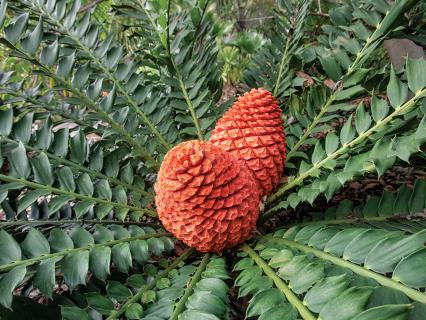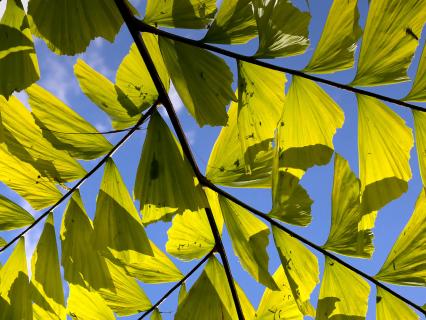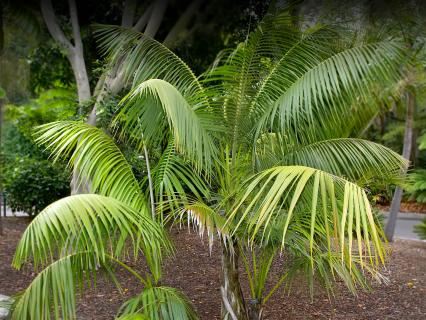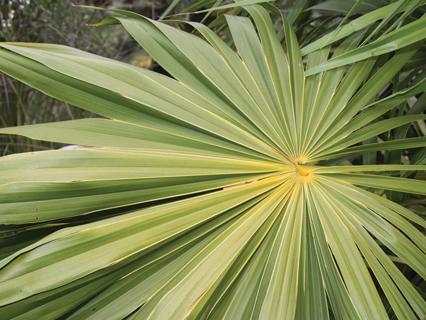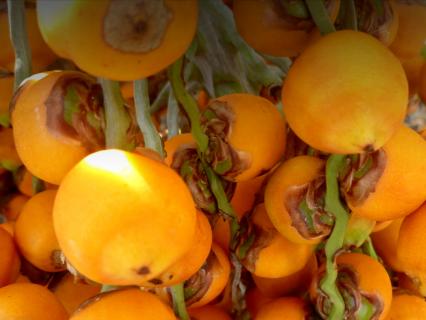
Palms and Cycads
DEFINING CHARACTERISTICS:
Palms:
Evergreen
Leaves either fan- or feather-like depending on type
May be dioecious or monoecious depending on type
Reproduces via flowers
Cycads:
Evergreen
Large, divided leaves
Dioecious (individual plant is either male or female)
Reproduces via cones
PALMS: VARIETY
Displaying a variety of heights, leaf and trunk types, seeds, and flowers, the palm familly Arecaceae is quite diverse. They are yet another plant that is extremely important to humans; palms are used for food (coconuts, dates, etc.), oil, sugar, wine, tagua (a form of vegetable ivory), ropes, mats, fuel, furniture, instruments, and more.
PALMS: SEEDS
Widespread through the world, many palms have their seeds dispersed by the wildlife that feed on them, everything from cassowaries and African elephants to shrikes, black bears, and wild dogs. One type of palm has the distinction of producing the largest seeds in the Plant Kingdom: the coco-de-mer palm seeds from the island north of Madagascar are the size and shape of a human's posterior!
CYCADS: ANCIENT
To many people, the long leaves emerging from the center of the plant makes a cycad resemble a fern or a palm tree. However, these ancient plants are in a group all their own: Order Cycadales, one of the most endangered plant groups in the world.
By the time dinosaurs ruled the world, cycads were already fairly widespread, having made their appearance in the late Paleozoic era. The prehistoric plants provided food for many of the giant plant-eaters and managed to adapt and survive through the world's drastic climate changes to become even more widespread in our era, until recent times.



